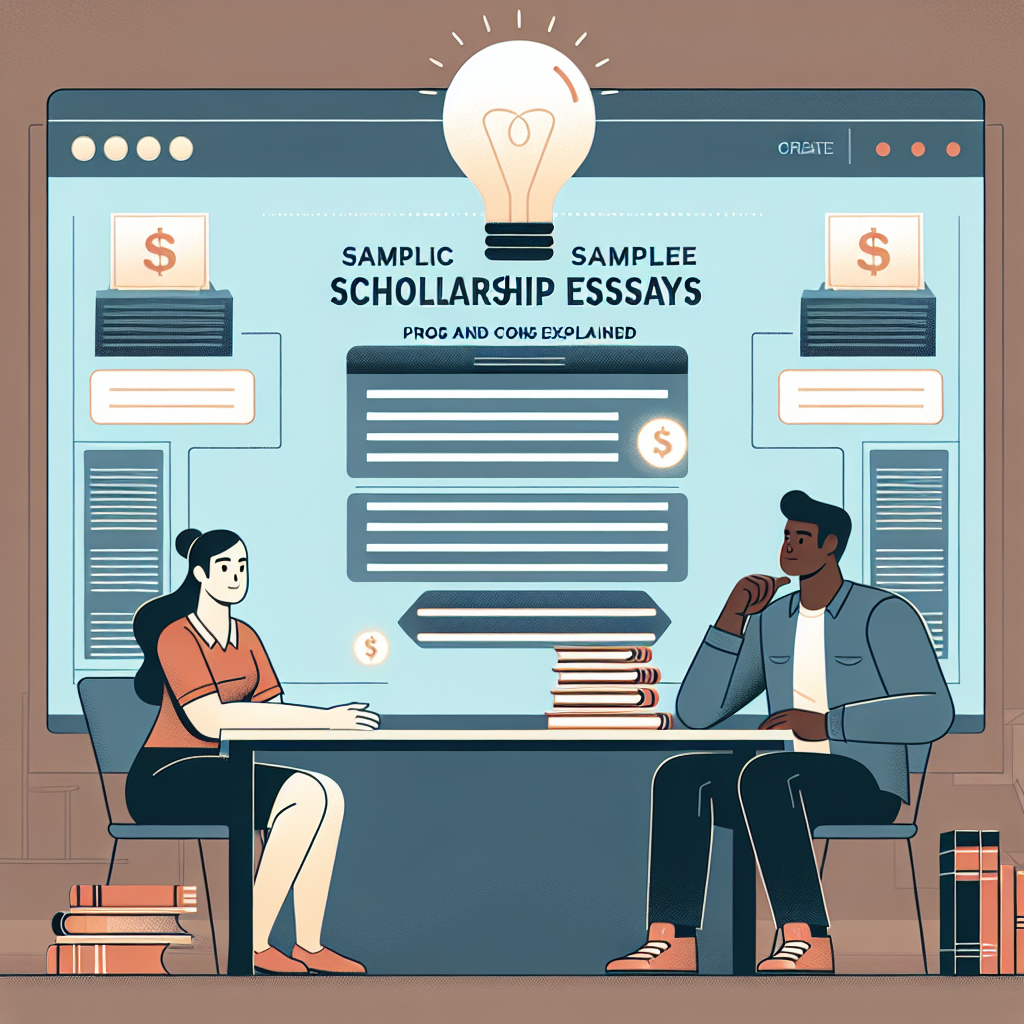Sample Scholarship Essays: Pros and Cons Explained. Choosing whether to read, adapt, or submit sample scholarship essays is a decision many applicants face. This article walks through the advantages and drawbacks of using examples, gives practical tips on how to use them ethically, and highlights resources for applicants in creative fields.
Pros of Reviewing Sample Scholarship Essays
Looking at example essays can be instructive. For many students, especially those writing an application essay for the first time, sample pieces offer a concrete model of structure, tone, and word economy. They can help you understand how to:
- Open with a compelling hook that captures a reader’s attention.
- Organize personal anecdotes around a clear theme or message.
- Demonstrate impact and growth rather than simply listing achievements.
Sample essays also reveal common pitfalls: vague claims, lack of specificity, and essays that fail to connect the applicant’s story to the scholarship’s goals. When used as a learning tool, examples accelerate improvement and inspire craft techniques like showing instead of telling.
Pros and Cons of Using Sample Scholarship Essays
Despite their usefulness, sample essays carry risks if relied upon uncritically. One clear benefit is time-savings—viewing samples can shorten the brainstorming phase by offering prompts and structural templates. They can also clarify essay prompts that seem ambiguous at first glance, helping applicants translate broad questions into focused responses.
On the flip side, over-dependence on templates can lead to generic essays that blend into dozens of others. Reviewers and scholarship committees are often experienced at spotting recycled language, clichés, and essays that lack authenticity. Using examples as a shortcut or copying phrases verbatim can damage an application and harm your reputation.
Common drawbacks to watch for
- Loss of unique voice: Templates may smooth out the quirks that make your story memorable.
- Generic narratives: Essays that follow a formula too closely often read as predictable.
- Academic integrity concerns: Direct copying or close paraphrasing can be considered plagiarism.
How to Use Samples Ethically and Effectively
The best practice is to study sample essays to learn structure and rhetorical moves, then write from scratch. Start by analyzing what works in a sample: how the introduction frames the problem, how transitions create momentum, and how the conclusion reinforces the main lesson. Then, draft your own piece using those techniques while ensuring all content reflects your experience and voice.
Consider the following process:
- Read 3–5 high-quality samples and note common techniques.
- Outline your own story focusing on one main theme or lesson.
- Write an original draft without looking at samples to preserve authenticity.
- Use samples again only for editing tips—sentence variety, vivid verbs, and tightening language.
Special Considerations for Creative and Art Applicants
Applicants in artistic fields should be particularly careful: scholarship panels for the arts often value a distinct voice and originality. If you’re applying to art scholarships, you might find targeted guidance through resources focused on visual and performing arts. For example, applicants can explore tailored opportunities like scholarships for art students to learn what panels expect from creative portfolios and accompanying statements.
Balancing portfolio work and written statements
When a scholarship asks for both a portfolio and an essay, use the essay to contextualize your creative choices—what inspired a piece, the technical or conceptual challenges you faced, and how your practice informs your goals. Samples can suggest ways to narrate artistic growth, but your unique creative perspective should remain central.
For broader context on how education and training influence career trajectories and earnings—information that can help you frame the long-term significance of a scholarship—see this authoritative resource: BLS article on education and training outcomes.
Quick Takeaways
- Samples are valuable as learning tools, not templates to copy.
- Always prioritize authenticity and personal voice in your essays.
- Use examples to learn structure and refine editing, then create original work.
FAQ
Q: Is it ever okay to use lines from a sample essay?
A: No. Quotations or lines from sample essays should not be reused verbatim. If a phrase captures a concept you like, rewrite it in your own words and make it relevant to your experience.
Q: How many samples should I review before starting my draft?
A: Reviewing 3–5 strong examples is usually enough to recognize effective structure and tone. More than that can lead to imitation rather than inspiration.
Q: Can sample essays help with scholarship interviews?
A: Yes. Studying samples helps you articulate key stories and themes that can be adapted for interview responses, but practice speaking about your experiences naturally rather than reciting rehearsed lines.



